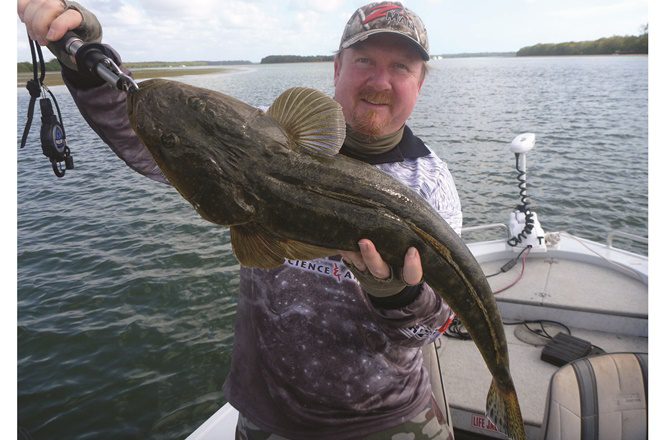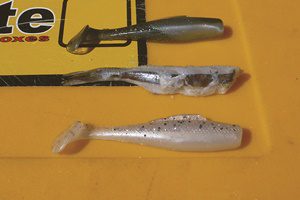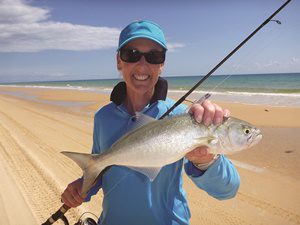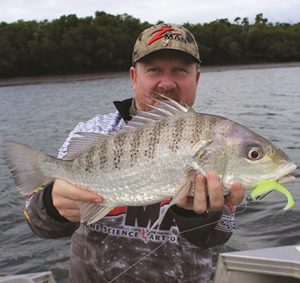
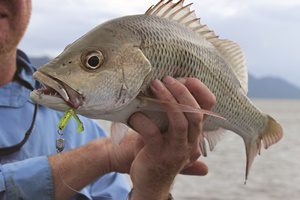
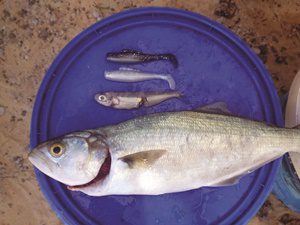
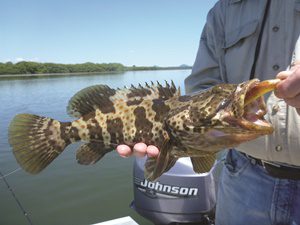
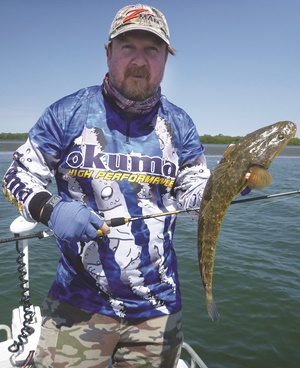
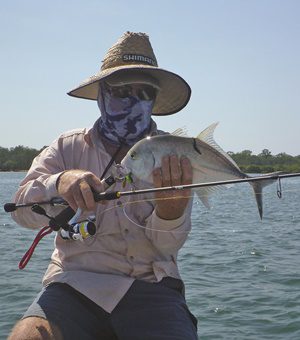
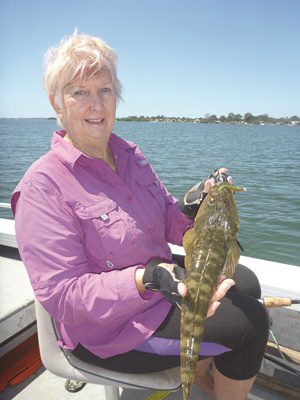
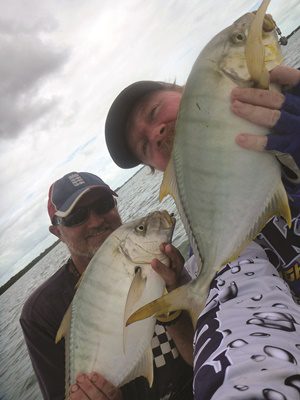
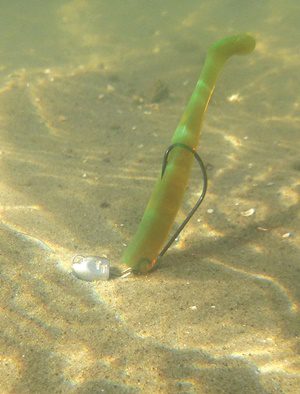
FISHING is a sport where we are forever learning and over the past few decades I have learnt from magazines, television, the internet and other anglers, developing my knowledge and skills based around different species, techniques, environments, weather and water conditions, lure selection, knots and more.
As we learn more and discover more pieces to the puzzle, we begin to crack patterns, read the water better, make more informed decisions and catch more fish. Here are 10 tips I have picked up along the way that will hopefully help get you hooked up.
Structure is king
Whenever I’m fishing new areas, the first thing I do is look for available structure. Find the structure and you often find the fish. Structure offers shelter, food and an ambush point, while also creating a break in the water flow that the fish can use to save energy while waiting for food to be brought to them. Natural structure includes mangroves, lilies, timber, weed beds, drop-offs, rock bars and sandbanks, while manmade structure comprises builds such as bridges, rock walls, pontoons, jetties and boat ramps.
Some structures are obvious, while others will require a sounder or quality pair of polarised sunglasses to assist in locating it. Take note of the structure in the area you are fishing and try to target it, as usually more life is in the oasis than the desert.
Find the bait, find the fish
This is a saying I remember from when I was a kid and it has always stuck with me. It’s also amazing how often it has rung true. Many times I have fished an area without bait that just feels lifeless, then moved to an area where bait is more actively flicking and creating ‘nervous water’ on the surface and it’s fish on.
When fishing the beach, I have stayed with a bait school or followed the school along the beach while casting lures and it generally doesn’t take long for a predatory species like tailor, queenfish or mackerel to turn up. At the end of the day, we all need to eat.
No run, no fun
Another old saying and one that has again rung true on many occasions. Water movement brings structure into play even further, creating eddies and breaks in the current that focus the bait and in turn force the fish into more defined areas. Water movement can also mean less time for fish to make a decision on whether or not to eat something, which is an advantage when fishing with lures.
I have fished with anglers who follow the tidal push up larger rivers, using the outboard to race up the river ahead of the push and make the most of this increase in water flow as it reaches different sections of the river and switches on the bite. At times you will prefer less tidal flow and want to fish the neap tides and tide changes. This is ideal for targeting structure and schooled fish in deeper water and in areas where the tidal flow is often too strong.
Match the hatch
A saying you have probably heard before and another that is worth considering whenever you’re casting lures. If prawns are in the river, a prawn imitation may be the go, likewise a baitfish imitation if you can see baitfish flicking on the surface. The key is to mimic what the fish are eating as closely as possible.
It can even come down to colour, and I have had great success fishing plastics that are green and clear after noticing garfish in the area being fished. On the flipside, if this isn’t working, it may be worth casting something completely different, such as a different profile or a fluoro colour to try to attract the fish’s attention.
Look and listen
It’s amazing how actively looking and listening to what’s going on around you can produce more fish. So often I have seen a prawn of baitfish flick, quickly cast to where the action was and boom, instantly hooked up. The culprit is often a bream, trevally, snapper or flathead feeding actively, so when your lure lands it’s game on. Likewise I have been working a bank, heard a splashing sound behind me, turned around, cast and fish on!
When a fish is hooked, keep an eye on it as it gets closer to the bank or your vessel because often other fish will follow it up, sometimes even trying to steal the lure from its mouth. If another fish is with it, you may opt to get someone to make a cast behind the fish for the chance of a double hook-up. We have scored double hook-ups on bream, trevally, flathead and more by getting a cast to following fish.
Downsize
I have heard Nick Whyte from Tech Fishing say, “Big lures catch big fish; small lures catch all fish,” and this has been proven to me many times over the years. When chasing flathead recently I have caught loads on a small 2.5” paddle tail plastic, but surprisingly this little paddle tail has also landed half a dozen larger fish, including a few in the 60s, a couple of 70s and an 80cm fish.
Though I have also cast larger plastics during these sessions, it’s been the smaller plastic that has produced the bulk of the flathead while also enticing bream, grunter, whiting and other species that would unlikely have been landed on the larger plastics. If your session is quiet, try downsizing for more species and action. It’s the old jellybean theory. Even if you’ve had a big dinner, you still have room for a jellybean.
Colour
It’s amazing how often a colour change can produce a fish and I have a theory about choosing a colour. If you go through my soft plastics kit, you will find at least three different colours in each of my favourite models of plastics. A natural or clear colour for when the water is clear and the day is bright, a darker, silhouette colour for when the day is darker or the water dirtier or stained, and for when these aren’t working a fluoro colour will often change things up.
Another consideration when selecting colours is UV-reactive colours. Many anglers will ensure they are carrying both UV-reactive and non-reactive colours because fish will sometimes prefer one over the other depending on the conditions. An example of this is the bream tournament favourite, the Z-Man 2.5” GrubZ, with one bream tournament being won on Motor Oil colour (UV), then the next on Bloodworm colour (non-UV). Shining a UV torch on the lures shows you how they react.
Scent up
Time and again scent has proven effective when fishing lures. Whether it’s encouraging fish to bite at all, to bite more aggressively or hold onto the lure longer, scents attract fish and trigger strikes, while also masking foreign scents such as fuel and sunscreen. When the bite is tough, try scenting up your lure. I use gel-based scents because they are much stickier and stay on longer.
Apply scent every 30-50 casts or after catching a fish. Add a small amount of scent to each side of the plastic near the jig head and slide your fingers down each side of the plastic to the tail to spread the scent across the entire plastic. Some plastics feature a belly slot and this is a great place to apply additional scent.
Step outside the square
We are creatures of habit and will often fish the same spots, cast the same lure or lure colour and use the same retrieve trip after trip. By mixing things up and trying different colours, lure profiles, retrieves and locations, you will learn more, crack more patterns, land more species and may even learn more about fishing your favourite lures, locations and species.
Fishing is an awesome sport, with so many variables and we never stop learning. Magazines, television, the internet and other anglers are just a few sources of information that can help us to fish more effectively and catch more. Sometimes it’s just that one piece in the puzzle that stands between a slow session and a bent rod.
Do the miles, get the smiles
Many moons ago I was on a bass fishing and camping adventure with a mate and a friend of his who said something that has stuck with me and pushed me harder than ever when it comes to fishing: “Do the miles, get the smiles.” I have always fished pretty hard, however I dig deep and pull this saying out when things get tough and it drives me to paddle to one more pool, walk to one more surf gutter, throw 10 more casts or try something different.
It’s amazing how many times this has turned a trip around or produced a new species, new PB or cracker fish to finish the session on a high. Go the extra mile and the rewards will come, whether it’s prepping gear, getting on the water early or pushing on when the bite is tough, you will be rewarded with knowledge, fish and the satisfaction of working for the success.
See you on the water… 10 tips fishing 10 tips fishing 10 tips fishing 10 tips fishing 10 tips fishing 10 tips fishing 10 tips fishing 10 tips fishing 10 tips fishing 10 tips fishing 10 tips fishing 10 tips fishing
Click here for more hot tips on casting for tuna in Hervey Bay
 Bush 'n Beach Fishing Magazine Location reports & tips for fishing, boating, camping, kayaking, 4WDing in Queensland and Northern NSW
Bush 'n Beach Fishing Magazine Location reports & tips for fishing, boating, camping, kayaking, 4WDing in Queensland and Northern NSW
